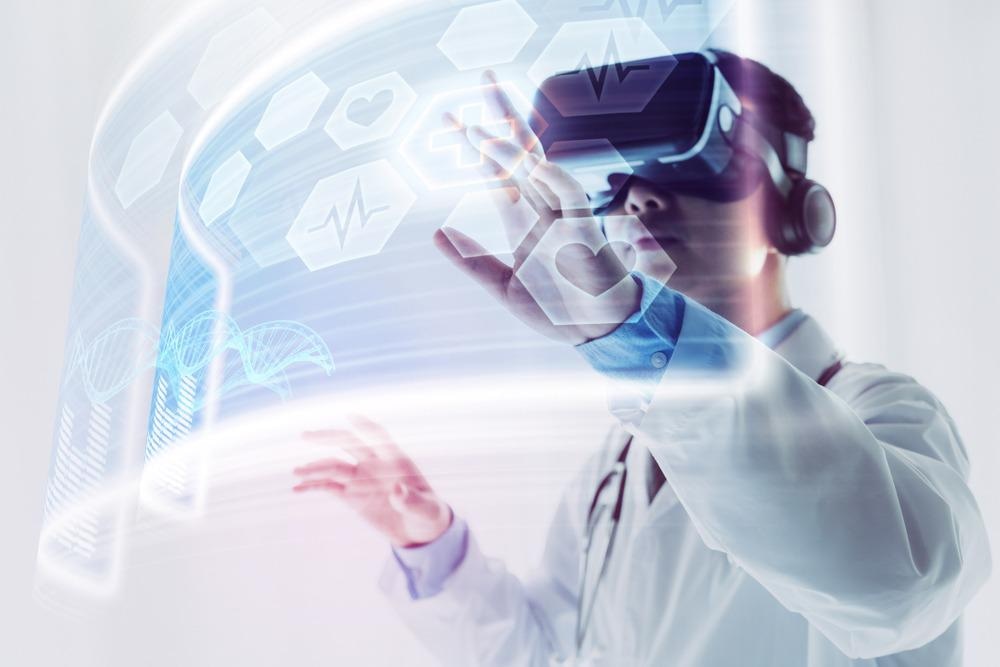In the summer of 2016, 500 million people downloaded the Pokémon Go app that entered users into the world of augmented reality (AR) as they hunted for Pokémon characters in their own environment via the help of their phones. For many, this was their first experience of AR, a concept that caused a global sensation at the time of the game’s launch. Since the dust has settled, many have begun to question what the real value of AR is. Publicly, many games that leverage AR are fairly well known, but the technology is being used for more than just fun.

Image Credit: Gorodenkoff/Shutterstock.com
Advances in AR technology are being leveraged in many scientific applications. While AR initially showed much promise in some scientific sectors, such as healthcare, it was stalled as scientists waited for new developments in the technology. Recently, innovations have picked up again, and here, we discuss the fields of science where AR is making the most impact.
Medicine
While AR is still considered to be in its developmental stage, it has already made a significant impact on medicine and has already found many uses in this field. AR is already helping surgeons carry out surgeries more precisely and more efficiently. AR healthcare apps are helping guide surgeons in a variety of surgeries, including minimally invasive procedures and locating tumors.
An example of one such AR technology is Sync AR, a software program that adds digitally enhanced images into the microscope of a surgical device.
More AR technology applications are being developed in the field of medicine. Scientists at The University of Maryland, for example, are developing AR applications such as those first used at Stanford, Duke, and Johns Hopkins, to create AR headsets that enable doctors to see key patient data and digital images superimposed over the field of view. It is hoped that these innovations will prevent doctors from having to split their focus.
Additionally, scientists at Children’s Mercy, Missouri, are developing AR to view CT scans prior to an operation, allowing the surgeon to explore the organ and tissue by projecting it, for example, onto a fixed point in the center of a room. The technology could enable surgeons to walk through a patient's organ, gaining a deeper understanding of it before they operate on it.
Medical training
Unsurprisingly, given its impact on medicine, AR has also been leveraged into medical training. Scientists have developed AR that gives medical students experience in conducting various tasks they will do as a doctor or surgeon, such as operating an MRI machine or carrying out surgery, before they practice in real life. For example, medical students at the Cleveland Clinic at Case Western Reserve University are using AR headsets to learn anatomy.
Research
While the use of AR remains relatively niche in the field of scientific research, some key insights have already been gained by leveraging this technology.
For example, researchers at the Benaroya Research Institute, Washington, have used AR to help visualize the lysosomes within a cell. As a result, the researchers were able to understand the complex interactions and activities occurring within the cell that were invisible to them in the 2D images. The researchers gained insights that would have remained hidden had they not been given to opportunity to look at the cells differently.
Healthcare
While AR has yet to reach its full potential in healthcare, it has the potential to change the lives of millions around the world who live with disabilities. In particular, AR stands to help those living with visual impairment. Scientists are working on ways to develop AR so that it can help give independence back to those living with disabilities.
For example, AR has been incorporated with PGS technology to help those with disabilities perform everyday tasks such as grocery shopping. AR applications on smartphones are being used to help users get details of products and add them to a virtual cart. For those without the use of their hands, AR glasses have been developed to scan and provide information about an item without needing to pick it up.
In the coming years, we will likely see significant developments in this field, with more technologies emerging to help a greater number of people with a wider range of disabilities and day-to-day challenges.

Image Credit: Thx4Stock/Shutterstock.com
Pharmaceuticals
Finally, AR is making an impact in the pharmaceutical industry. Scientists have developed AR so that it can demonstrate to patients how a drug will work. The technology is intended to supplement to long descriptions that are included with drugs that explain to a patient how the drug will impact their body. It is hoped that by visualizing the mode of action of a drug, patients will achieve a greater level of understanding how the drug that they are being prescribed.
Additionally, work is underway developing AR that could help lab technicians responsible for carrying out experiments with potential new pharmaceuticals. AR equipment may, in the near future, be used to help lab workers monitor experiments, which may help to increase the efficiency and accuracy of lab tests.
Sources:
- Cipresso, P., Giglioli, I., Raya, M. and Riva, G., 2018. The Past, Present, and Future of Virtual and Augmented Reality Research: A Network and Cluster Analysis of the Literature. Frontiers in Psychology, 9. https://www.frontiersin.org/articles/10.3389/fpsyg.2018.02086/full
- Matthews, D., 2018. Virtual-reality applications give science a new dimension. Nature, 557(7703), pp.127-128. https://www.nature.com/articles/d41586-018-04997-2
- Sujeeth Kanuganti. 2019. Augmented Reality Benefits Us All. [Online]. Forbes. Available at: www.forbes.com/.../?sh=7e91885e3643 (Accessed 11 December 2021)
Further Reading
Last Updated: Mar 7, 2022